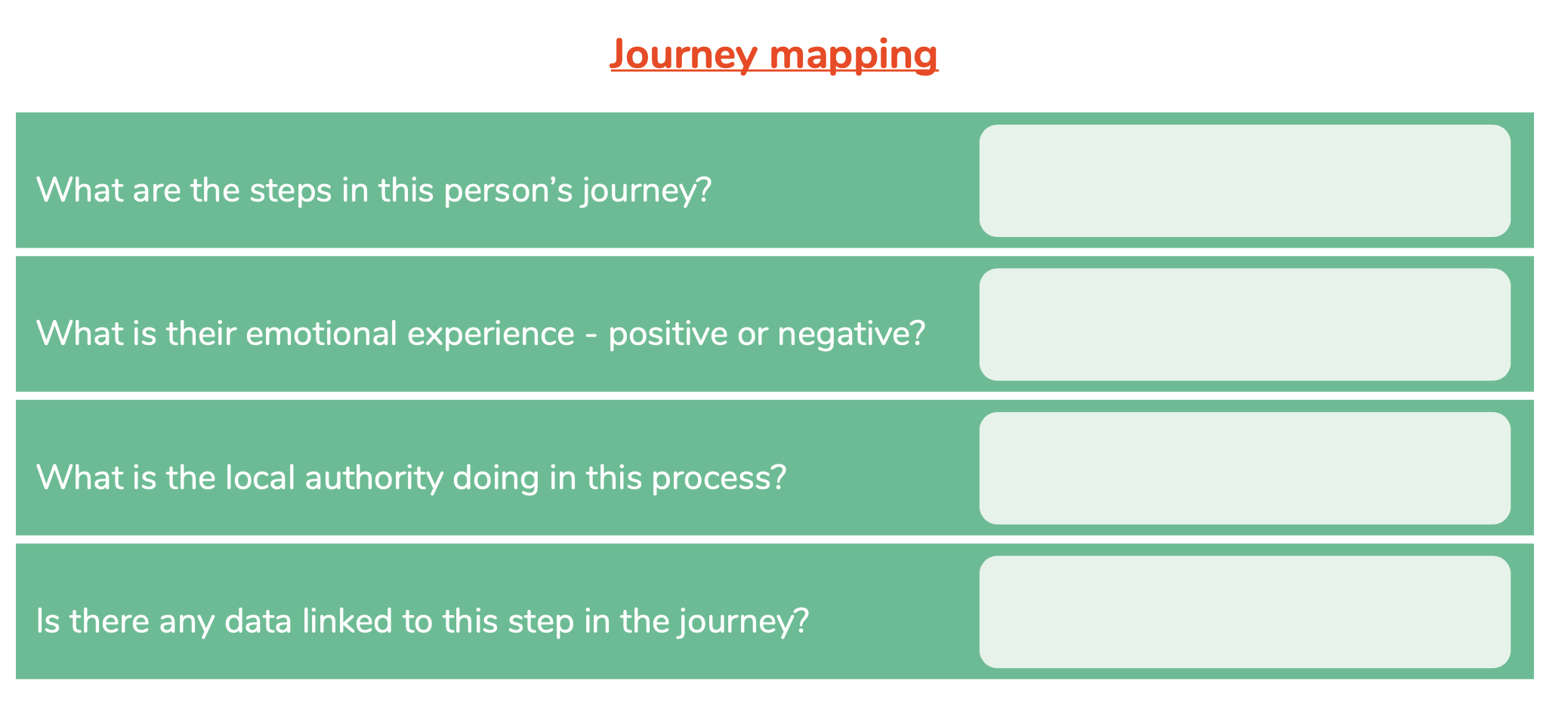Defining the problem
It’s crucial to define the scope of the problem well so that you know you are tackling the right thing. This step encourages you to speak directly to your users to further develop your understanding of the challenge and to make sure you’ve truly understood the contributing factors. The aim is to have enough data and insight to articulate a clear problem statement which will be key in the next stages of the project.
Problem scope canvas
Map out what you know already about the problem and identify areas for further research.

HOW:
- Convene your core team, or a larger group of local stakeholders
- Print the tool out on A3, or draw it on a piece of paper
- The questions in each of the boxes are prompts and ideas of what you should know in order to have a really robust problem statement
- Think about what you already know: how do you know it? Do you have any data or evidence to back it up? What are you not sure about, where do you have gaps?
- Discuss how you will conduct the research to get a deeper understanding
EXAMPLE:
For the local group of Benguerir, this tool has helped to better understand the problem of access to health care and the booking of appointments. They saw that patients were travelling great distances to make appointments, and there were other issues with the maintenance and follow-up of medical records. They agreed the aim of the project would be to address these issues and guarantee an inclusive, efficient and local public health service.
Most importantly, by using the problem scope canvas, they were able to highlight the data gaps that need to be filled. They found they were missing key baseline data about the health service, such as numbers of appointments and numbers of patients.
User research methods
Gather insight on your users, their lives, experiences and challenges they encounter. This tends to include both qualitative and quantitative techniques, and a range of methods such as observing users in their real-world setting, interviews, or conducting surveys.
HOW:
- Host a workshop with your core team to plan your user research together
- You should agree on the objectives of this research and what to focus on at this stage. In the early stages, the research will be broad and focus on understanding the problem and the current citizen experience. Later on, you can use user research methods to focus on particular parts of the service and to test ideas with users.
- Identify your target research participants depending on what you want to learn and discuss how you might recruit them (do you have existing channels of communications with them, or might you need to work with a partner?)
- Consider which research methods you want to use
- Try to involve your team and local action group as much as possible throughout the user research. Where appropriate, invite them to listen in, and share findings regularly
EXAMPLE:
In Bamako, owners of two-wheeled vehicle are required to pay the annual road tax. In order to better understand the problem related to this procedure (which was previously paper-based and manual) the local ASToN group conducted a survey amongst vehicle owners. The survey focused on understanding the users’ experiences and challenges relating to this tax, including the price of the tax, its accessibility, the ease of access to the payment counters, the time required for the procedure, and the physical medium of the sticker.
Journey mapping
Understand and visualise your citizens experiences of a service over a period of time, plotting the touch points from their point of view and not the point of view of the local authority.
HOW:
- This can be done by the team after conducting individual interviews or as part of a workshop with a selection of citizens and stakeholders with strong experience in the area
- Make sure all contributions are from real personal experiences – ask them to describe the last time they used the existing public service to avoid people saying what should happen instead of what actually does happen
- If data is available from other research, share this and invite people to use it too
- Map their experience on the template: what are the steps of their journey; were there any positive experiences; when was it difficult?
- Get people to identify opportunities for improvements in the journey and discuss any emerging themes across the ideas generated
Problem statement
Align team and stakeholders around a clear problem to ensure you have a shared view of the desired outcome.
HOW:
- Review the insights you have gathered in the user research and pull out the key elements you want to share with your stakeholders
- While you are sharing the insight with them, ask them to write down things they hear that could be the central problem statement for this project using the ‘How might we…’ format
- Ask the group to share their statements and discuss any similarities or differences
- Together agree on one statement which describes clearly the problem you want to address and the impact you want to have
EXAMPLE:
As part of the ASToN network, Benguerir developed the following problem statement:
HOW MIGHT WE improve the communication and coordination functions between the hospital and the citizens based on digital solutions and involving the young people of the city SO THAT our medical services are more accessible?
READ MORE: Miro – Customer Problem Statement




